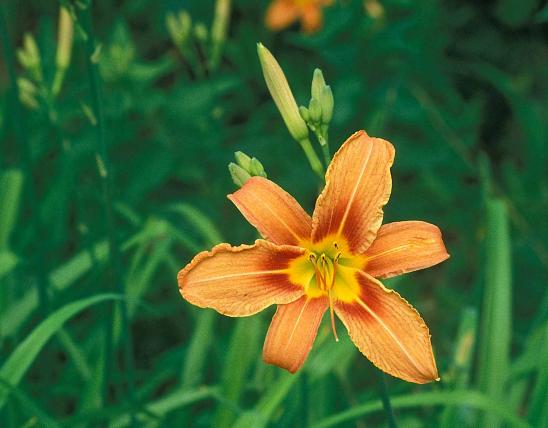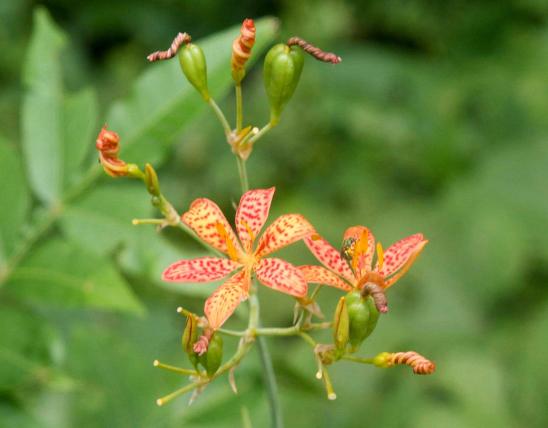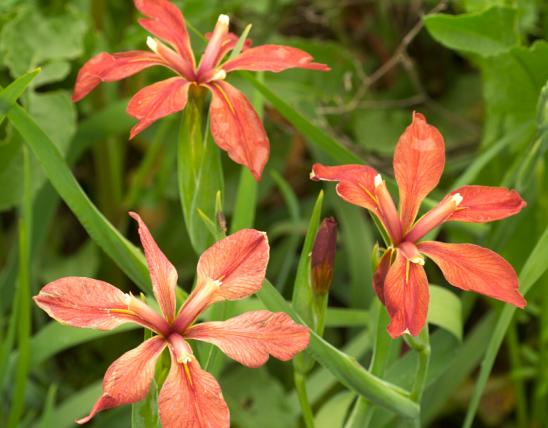
Perennial lily with an unbranched, hairless stem, growing from a stout bulb. Flowers single or in whorls of 2–5, on stems arising from upper leaf axils, nodding, with 6 tepals (3 sepals and 3 petals, all 6 alike), orange with many purple spots, recurving; the 6 stamens and the stigma protrude prominently. Blooms June-July. Leaves lance-shaped, mostly whorled, sometimes alternate at the lowest and highest nodes, to 5 inches long and ¾ inch wide, roughened with minute, toothlike processes along the margins and veins.
Similar species: Tiger lily (L. lancifolium) has only alternate leaves and forms bulblets at leaf axils; a nonnative, it does not persist long out of cultivation. Wood lily (L. philadelphicum) has flowers erect, not nodding; possibly extirpated, it may still occur in some northern native prairies. Swamp lily (L. supurbum) has smooth leaves, lacking teeth; it has been found only in Perry County.
Height: 3–8 feet.

Scattered statewide, but apparently absent from the Southeast Lowlands.
Habitat and Conservation
Found in low woods, swampy meadows, moist areas in prairies, along streams, but sometimes on bluff ledges or other dry ground; also railroads and roadsides. Sometimes Michigan lily plants are found as colonies of small or spindly, nonflowering individuals. This is perhaps caused by excessive shading as trees form a closed canopy over formerly open areas. Such populations apparently can persist for many years without flowering.
Human Connections
Many people cultivate this native lily as a low-maintenance ornamental in flower gardens. It attracts hummingbirds and has no serious insect or disease problems.
Ecosystem Connections
Sphinx and hummingbird moths and large butterflies visit the flowers, and a variety of mammals browse the foliage. Small rodents, such as voles, that burrow underground probably eat the bulbs.




























